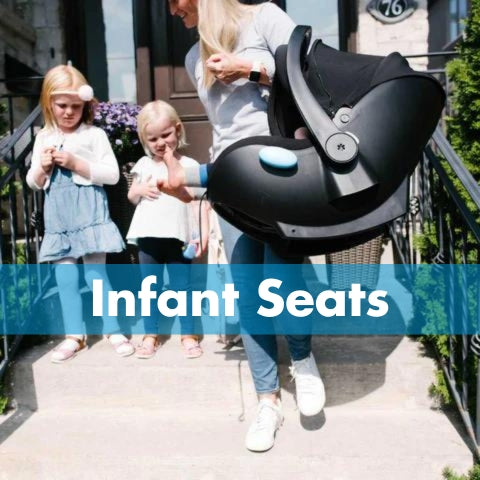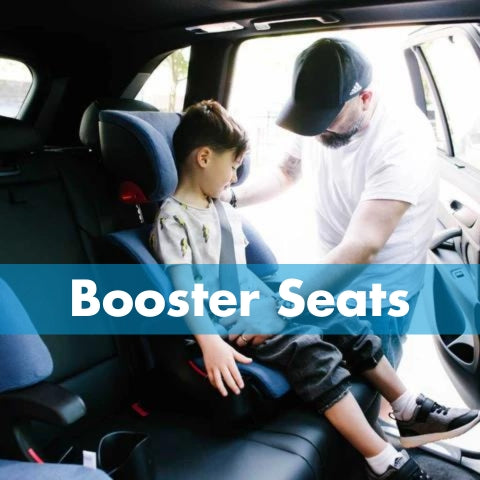The arrival of a child is an exciting time in life. It is a time of firsts, a time of planning... and a time of shopping! There are many big purchases that are made in the first year of a baby’s life, but none are as important as the convertible car seat – the seat that cradles your child as an infant and continues to keep them safe as a toddler anytime they set foot in a vehicle.
It’s important to be well prepared by first finding out your child’s current height and weight, planning the trip for a time of day when your little one is typically content, and planning to take the vehicle that the car seat will be installed in.
Convertible seats can be installed both rear-facing for infants and younger children, then turned forward-facing for older and larger children, typically until they’re ready to move on to a booster seat. But before visiting your local retailers, it’s important to be well prepared by first finding out your child’s current height and weight, planning the trip for a time of day when your little one is typically content, and planning to take the vehicle that the car seat will be installed in.
Don’t be overwhelmed by the plethora of options when you first walk into a store. Though there are many seats to choose from, here are some key points to consider ensuring you make an informed decision when choosing a convertible seat for your most precious cargo:
Your child should fit the convertible car seat well
Kids come in different shapes and sizes and it’s important to choose a seat that fits your child well. You’ll first want to ensure that your little one is within the height and weight requirements of the car seat. You can then place them in the car seat, checking to see how much growing room they’ll have. The larger the space between the top of their shoulders and the highest set of harness slots, the more growing room available and the more use you will get from that particular convertible car seat.
Some models of convertible car seats may have adjustable headrests that cover some of the harness slots, so make sure you’re aware of what the seat offers. Store staff is often available to assist in adjusting the car seat to fit your child so that you can buckle them in and best assess their fit and comfort.
The convertible car seat should be easy for you to use
Convertible car seat models will vary greatly, with some seats having features that make it easier to install in the vehicle, while others have features which make it easier to use on a daily basis when taking your kiddo in and out of the seat—some even have both!
To check the daily ease-of-use factor, pay attention to the amount of effort needed to properly position and tighten your child in the seat. A harness that is easier to tighten can have a lot of long term benefits as your little one grows. Other features such as the chest clip or crotch buckle design may also influence ease-of-use, so make sure to check how each fits and operates when buckling your kiddo into the seat.
The car seat should fit your vehicle well
To give your child the best possible protection, it’s important that their car seat fits well in your vehicle.
Vehicle interiors differ from model to model, with each individual interior influencing how a car seat fits in the vehicle. The first two already-discussed steps should help narrow down your choices to a few seats to test in your vehicle before making a final decision, as many retailers allow customers to test the fit of seat prior to purchasing. Some stores may also have staff trained to assist with a test installation. If not, there will be installation diagrams on the car seat’s labels themselves if an instruction manual is unavailable.
When checking the fit of a car seat in a vehicle, it’s important to install the seat the way it will be used for your little one. Once a car seat is installed, it is very common for the position of the seat to shift which will certainly affect how it fits in your vehicle.
Once installed, the seat should have less than 1 inch of movement side-to-side and front-to-back when checked at the belt path, which is where the belt is routed through the shell of the car seat.
Consider additional features
Some convertible car seats offer additional safety features, such as side impact protection, and energy absorbing technology. Some may also have additional testing done that exceed the minimum requirements, such as NCAP testing which simulates more severe collisions using higher speeds.
While having additional safety features will obviously help ensure your little one is always safe for the ride, so too can features that increase a seat’s ease-of-use. Did you know that a whopping 80% of car seats are used improperly? Therefore, a seat that is more easily installed is a seat that has a greater chance of being used properly.
The task of choosing a safe ride for your little bundle of joy may certainly seem a bit daunting at first. But by being well-informed and following the above tips, you’ll be ready to roll with the confidence that your kiddo is riding in the convertible car seat that is best for them and your family.
Shopping for a convertible seat? Check out Foonf and Fllo!






